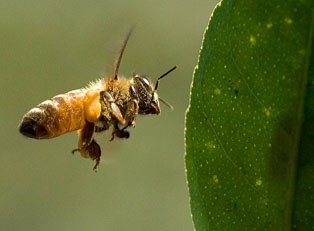An allergic reaction occurs when a person’s immune system produces antibodies to fight off a foreign substance it has come into contact with. These antibodies then trigger the activation of special cells that can cause the reactions felt in the nose, throat, chest, stomach, and skin.
Allergic reactions may become more severe with repeated exposure to allergins; bee stings are a good example of this phenomenon. The more times the allergic person is stung, the worse the reaction will be. Allergies are an annoying fact of many people's lives, and while it is possible to outgrow some allergies, it is just as possible to develop new ones throughout life.
Below are four common allergy causes:
Pollen Allergies
Hay fever is the general term used when describing an allergic reactions to plants, grass, and pollen. Technically, hay fever is known as allergic rhinitis, which is then divided into two types: seasonal and perennial. Allergic rhinitis happens when the plants that trigger the response are flowering and pollinating, and perennial rhinitis which occurs throughout the entire year.
Many allergy sufferers can get a fairly good idea about allergen is causing them to react by noticing if allergies flare in unison with horticultural events, such as when a crepe myrtle is blooming or the lawn is being reseeded.
Food Allergies
Food allergies can be extremely dangerous. The peanut allergy is very common, but allergies to other foods are just as routine. These include other nuts like almonds, walnuts, and hazel nuts; milk and milk products; eggs; shellfish; soy; and wheat. Even the unremarkable tomatillo causes terrible itching and hives to the many people who are allergic to them. Redness and swelling of the skin, tightening of the throat and--in extreme reactions--anaphylactic shock can all be caused by food allergies.
Medicine Allergies
Allergic reactions to medicines can be frightening because until a reaction happens, a person may not be aware that something as common as penicillin could send them to the hospital. The most common medicine allergies are to all the "cillins" (penicillin, ampicillin), keeflex (a synthetic penicillin), "sulfa" drugs, barbiturates, codeine, and insulin.
A mild reaction may take the form of a rash or hives, itchy skin or eyes, and congestion in the lungs. When the reaction is more severe, a person may experience anaphylaxis, which can impair or stop breathing, cause a racing pulse, and trigger dizziness or fainting.
Dust and Mold Allergies
Allergies to dust can be triggered by a number of ingredients that compose dust. Dust mites are the most commonly known, and they can also cause asthma in children. Animal fur or feathers can also trigger dust allergies. Mold, which is a fungus, produces spores which float in the air and are breathed in. Mold can actually be one component of allergy-causing dust, or the sole cause of an allergic reaction.




